Summary
- Potential due to distributed charges
- Potential and conductors
- Capacitance
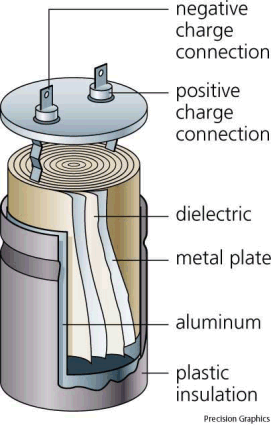
Knight2 29.CQ.10
What are the ratios of the fields and potentials at the positions indicated in the figure? Let
V = 0 V at the negative plate.
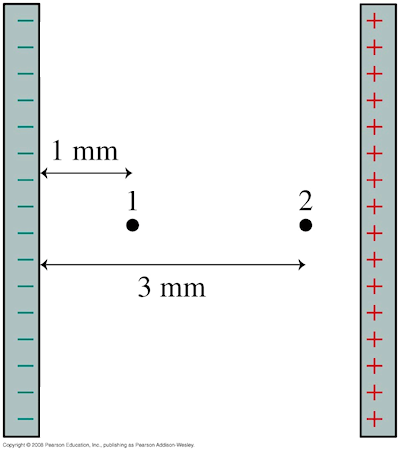


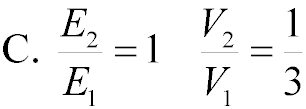

Answer
POP5 20.34a
Conductors with charges +10µC and −10µC have a potential difference
of 10 V. What is the capacitance?
A. 1 µF
B. 10 pF
C. 1 pF
D. 100 µF
Answer
POP5 20.34b
If the charges are increased to +100µC and −100µC, what is the new potential difference?
A. 1 V
B. 10 V
C. 100 V
D. 10 kV
Answer
PSE6 26.4a
If a drop of liquid has a capacitance of 1.00 pF, what is its radius?
A. 21.2 µm
B. 3.14 mm
C. 1.38 cm
D. 8.99 mm
Answer
PSE6 26.4b
If a drop of liquid has a radius of 2.00 mm, what is its capacitance?
A. 0.471 pF
B. 0.222 pF
C. 0.994 pF
D. 1.89 pF
Answer
PSE6 26.4c
What is the charge on a r = 2.00 mm drop if its potential is 100 V?
A. 4.71 nC
B. 22.2 pC
C. 0.994 µC
D. 1.89 µC
Answer
PSE6 26.18
What is the equivalent capacitance of the configuration below if each capacitor is identical?
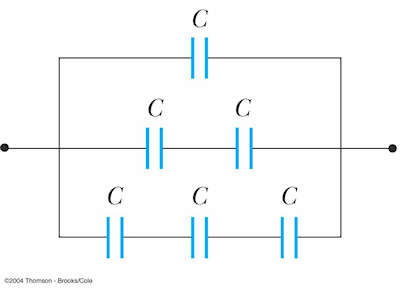
A. C/3
B. 2C
C. 11C/6
D. 6C/7
Answer
POP5 20.57b
Two capacitors of 25 µF and 5 µF are connected in parallel with 100 V across each.
What is the total energy stored?
A. 150 µJ
B. 0.150 J
C. 150 J
D. 150 kJ
Answer
POP5 20.57c
Two capacitors of 25 µF and 5 µF are connected in series.
What ΔV is required to store 0.150 J?
A. 22.8 V
B. 100 V
C. 137 V
D. 268 V
Answer
klm Walker5e Ex 21-17
If C = 24.0 µF in the circuit below, what is the equivalent capacitance of the entire circuit?

A. 8.00 µF
B. 16.0 µF
C. 36.0 µF
D. 72.0 µF
Answer

The field is constant in between capacitor plates, but the
potential increases linearly.
A. 1 µF

C. 100 V

D. 8.99 mm
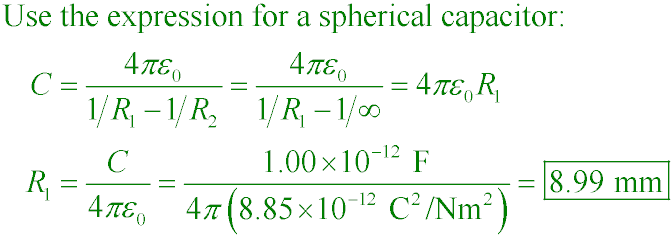
B. 0.222 pF

B. 22.2 pC

C. 11C/6
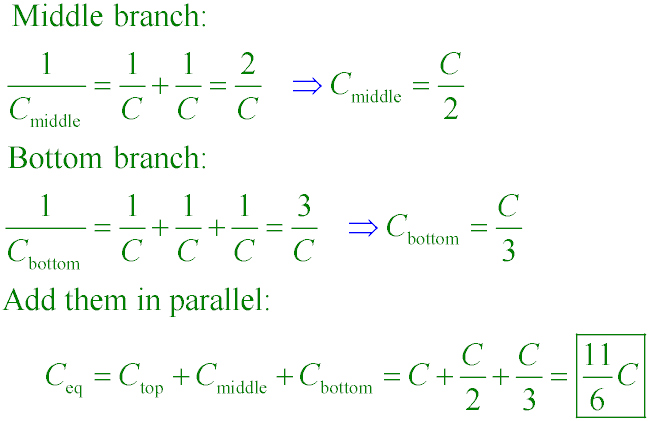
B. 0.150 J

D. 268 V


C. 36.0 µF
The two capacitors in series have an equivalent capacitance of ½C, and they are connected in parallel with a third, identical capacitor. Hence we add the two capacitances to get an equivalent capacitance of 1.50C, or 1.50×24.0 µF = 36.0 µF.

















